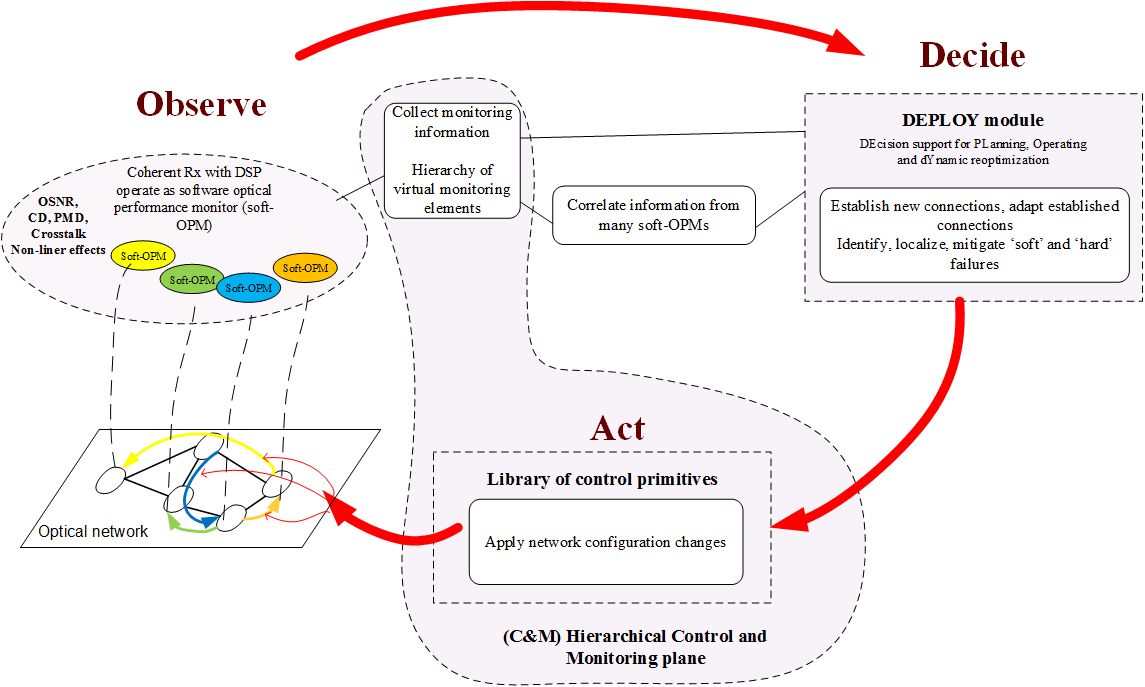What is the ORCHESTRA project?
The vision of the ORCHESTRA is to close the loop between the physical layer and the control plane, by using real-time impairment measurement capabilities of coherent optical transceivers.

The ORCHESTRA network understands itself, by processing and correlating the DSP (Digital Signal Processing) based impairment monitoring information that can be made available almost for free in the coherent receivers, and proceeds to optimize its performance in a dynamic and automated way. The network itself is viewed as a continuously running process that perceives current conditions, and then plans, decides, and acts on those conditions.
Coherent optical technology using DSP is the new norm, since it is the only viable way to increase transmission rate and reach (i.e., feasible distance) and achieve software defined flexibility. The coherent receiver can also be leveraged to provide physical impairment information from the DSP: effectively, every receiver in the data plane can become a software defined optical performance/impairment monitor (soft-OPM). Thus, the control plane can be aware of the state of every single lightpath in the network, but can additionally combine multiple monitored values in order to infer values of unmonitored effects or network entities (links, subpaths). What is particularly interesting is that this function comes almost for free, since soft-OPM function requires lightweight additions in the DSP capabilities already included in ASICs of the coherent receivers. As a result, there will no longer be a need for deploying fixed hardware monitors. This will yield significant savings in cost, energy consumption and network hardware complexity.
The provided soft-OPM functionality enables the control plane to provide true flexibility in the optical network and real cross-layer optimization. The control plane can assess the state of every optical connection in real-time, infer and solve interference problems, or re-optimize the network, by controlling transmission parameters and resources (links-spectrum) allocated to the connections. For example the impairment margins for operating the transceivers can be lowered, using their capabilities to the fullest extent. In this way, a really dynamic optical network is built, whether this involves setting up rapidly a new connection, or adjusting an existing one (increase/decrease its rate), or handling QoT performance issues and failures. By applying true cross-layer and across connections optimization starting from a local (involving a single connection) and then moving to more global scale the network can achieve high efficiency, close to its limits, while keeping the connection interference and control overhead to the minimum. This will be materialized by a hierarchical monitoring and control plane that will be based on a well-defined and complete library of control primitives (actions).

